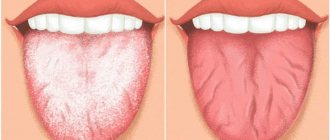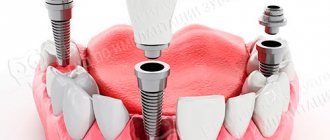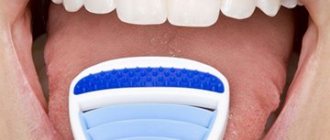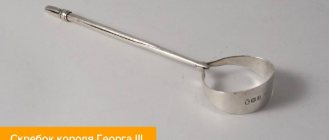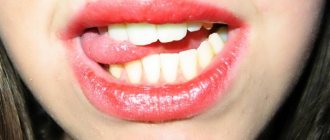Modern cosmetology does not stand still, constantly offering new methods of anti-aging procedures and their maintenance. However, not everyone is in a hurry to take advantage of the next cosmetic innovation, choosing more gentle, but no less effective methods for maintaining excellent condition of the skin and facial muscles. One of these trends, which is at the peak of popularity today, is mewing - a technique for natural harmonization of the face. These are exercises developed by British doctor Michael Mew and demonstrated by him on his YouTube channel.
Mewing and his background
Leading osteopathic specialists combine the study of a person's skull and face with the study of his body as a whole. This fully corresponds to the compensatory function of the body. In other words, if bone damage or degeneration occurs in one place, the process of soft tissue sagging occurs in another. And often doctors follow the standard path and try to eliminate only the consequences of pathology. But their elimination has only a temporary cosmetic effect.
Popular procedures in cosmetology today, masks, massages, myostimulation and others, do not guarantee permanent results. Moreover, their temporary effect, unfortunately, does not affect the deep layers, and the problem of sagging soft tissues remains unresolved in the future.
In turn, osteopaths have their own view of the situation and it is associated, first of all, with a thorough identification of the very cause of this dysfunction, so the work is carried out with the whole body.
A study conducted by English orthodontists yielded interesting results. The purpose of the study was national food traditions and the influence of certain foods on the proportions of the face and the structure of the skull. People who followed food traditions and chose solid foods had the correct skull structure and even facial proportions. On the contrary, soft foods with a high sugar content, as a result, led to deformation of the jaw bone tissue and changes in the structure of the skull.
In addition, wearing braces has something to do with the sunken face. While they are certainly beneficial for the teeth, braces accustom the facial muscles to a certain position and in many people, after 30 years, not only noticeable nasolabial folds appear, but also a deformation of the chin.
The difference between mewing and face fitness and facial massage
Many people know that face fitness and facial massage allow you to train muscles and maintain their elasticity. The main tasks of mewing are similar to those of face fitness, which helps to achieve elasticity of the facial muscles. It does not require special knowledge or skills or hours of training. In addition, this technique ensures the correct position of the elements of the dental system and makes breathing easier.
Maxilla and facial beauty
If you carefully examine the faces of people considered attractive and beautiful, you will see that in most of them the maxilla is moved slightly forward. And as a result:
- An open, wide smile;
- Clearly defined cheekbones;
- The upper lip is raised.
This allows, without plastic surgery or manipulation by makeup artists, to give the overall image a unique three-dimensional volume, leaving the proportions natural and ideal.
However, most people cannot boast of such proportions and the reason for this is the maxilla pressed deep into the skull, making the face flat and reducing external attractiveness. Correcting this situation entails moving forward the bone that forms the facial frame, but such a task is beyond the power of a cosmetic surgeon. And when trying to correct the situation, the results are not entirely successful lifts, tense skin and wrinkles.
If the maxilla, ideal from birth, begins to sink over time, causing a flattening of the face, there are the following reasons:
- Deformation of posture when working while sitting;
- Missing one of the teeth;
- Eating soft foods;
- Lack of thorough chewing of food;
- Using a bottle with a narrow neck instead of a glass;
- Improper swallowing and tongue position.
Each person takes about 2 thousand sips per day. So, when drinking from a cup, a kind of vacuum effect is created in the mouth and the maxilla moves forward. Due to the fact that the pressure of the tongue maintains the desired position of the teeth and presses on the palate, the jaws are stabilized and the sphenoid bone is mobilized.
If this process is disrupted and there is no solid food in the diet, the sphenoid bone does not receive the load it is supposed to, which leads to facial wrinkles, nasolabial folds and a noticeable “sagging” of the face and eyes.
In order to avoid the consequences of poor nutrition, uneven physical activity, crooked posture and others on the maxilla with age, you should adhere to the recommendations already outlined and pay close attention to mewing.
Relationship between tongue position and maxilla width
If a person has formed the correct position of the tongue since childhood, this will determine the development of an even line of teeth. He will not need special procedures or devices to eliminate malocclusion, which include braces. The picture above shows a malocclusion that developed in a boy by the age of eight. This is an open bilateral crossbite. The upper canine is crowded and has shifted relative to its normal position. All this was reflected in the appearance of the boy’s face.
The lower part of the picture shows the result of learning to correctly position the tongue relative to the palate, as well as the “adult” type of swallowing. For this purpose, the orthotropics technique was used. The upper jaw has noticeably changed: it has become straight, moved horizontally and become noticeably wider. The boy's face began to look more attractive.
The importance of adult swallowing
We have previously talked about the impact breastfeeding has on the development of the oral apparatus and facial muscles. Even an adult should regularly eat solid foods, such as carrots and apples. Compliance with these rules is the basis for the formation of a horizontally developed attractive face.
The two pictures above clearly demonstrate the differences in facial development between the sister and brother. The latter was breastfed for 30 months. At the age of one year he was given his first taste of solid food. The facial muscles are in good tone, and the face is horizontally developed, that is, its maxilla is pushed up and forward. Specialists in the field of orthodontics examined the boy and concluded that both jaws were correctly positioned relative to each other, and the bite was correct.
This boy's sister's tongue is not pressed to the roof of her mouth, but its tip rests against her teeth. Her mother breastfed her for 13 months. She was subsequently transferred to artificial nutrition. When sucking on a pacifier, the baby's tongue does not press against the roof of the mouth, but moves down to the lower part of the mouth. As a result, an incorrect type of swallowing is formed. A similar thing is observed in those children who have the habit of sucking a finger or pacifier. Unfortunately, all this negatively affected the attractiveness of the girl’s face: it is elongated downward, and the lower jaw is slightly pushed back.
Many of the readers will assume that genes are to blame. But the photographs show brother and sister. It is the use of different approaches to feeding children that leads to such significant differences in facial development, which are so noticeable even at the age of nine. Everyone may have a question: what could my face look like if its development took place in the most favorable conditions?
The influence of the type of swallowing used on facial attractiveness
Dr. M. Mew, who emphasizes the importance of developing an “adult” type of swallowing, argues that this is only possible if the tongue is positioned correctly in the oral cavity. All the “work” is done by the tongue, namely its deep muscles. The participation of lips or cheeks is practically excluded. Facial muscles can lose their tone if they contract chaotically, caused by using the wrong type of swallowing. The result is a “falling” oval of the face, saggy or puffy cheeks, swelling under the eyes. The described metamorphoses are directly related to the downward movement of the maxillae.
Weak muscle tone causes the desire to use the “through the mouth” type of breathing, which requires that the tongue be located at the bottom of the mouth. This causes even greater development of facial dystrophy. Improper swallowing is the cause of the early appearance of deep facial wrinkles as a result of the involvement of the muscles of the cheeks, lips and chin, which lose their tone over time.
How to force yourself to hold your tongue in the correct position
The founder of the orthotropics direction claims that control over the muscles of the back of the tongue is exercised by the human subconscious. This means that the position occupied by the tongue is maintained “automatically.” And if a person gets used to holding his tongue correctly (the back surface rests against the palate), then this state will be maintained unconsciously. It turns out that our subconscious can play an important role in shaping the external attractiveness of a person if we make some initial volitional efforts.
We can easily exercise conscious control over the front of the tongue while awake. But in a state of sleep such control is impossible. Therefore, it is very important to develop a “habit” of correctly positioning the tongue in the mouth on a subconscious level. The proper position of this organ plays an important role according to adherents of the teachings of Chinese alternative medicine, according to which the correct distribution of energy in the human body depends on this.
The tongue plays the role of a kind of “switch” that connects the main energy channels of qi and closes the “small heavenly circuit”. If the tongue is located behind the front teeth in the recess of the palate, it closes the basic canals and in this position is considered the “wind point”. These teachings also describe two more points: “fire” and “water”. The first (yang) is located in the center of the hard palate, the second (yin) is located closer to the base of the palate. We do not recommend immediately trying to place your tongue at these points. It will be very difficult for a beginner to swallow, and a gag reflex may even appear. However, if you position your tongue so that its tip touches the roof of your mouth behind your incisors, you may experience a pleasant sensation, as if a low voltage current is being generated. It will become more and more stable over time. As a result of the development of an unconscious reflex, the tongue will be in the correct position without causing any feeling of discomfort.
Who is mewing recommended for?
This technique was developed by an orthodontist for a wide range of patients. It has no age restrictions, anyone can easily master it. If face fitness is an extensive set of exercises, then mewing is just one exercise that keeps the tongue in a natural position (tightly pressed to the roof of the mouth). This method has not only a therapeutic, but also a cosmetic effect. He is capable of:
- Adjust your bite;
- Get rid of problems with swallowing;
- Keep the jaw in the correct position after injury;
- Get rid of age-related changes in the facial muscles.
For women
All women are beautiful at any age. The tenderness and freshness of youth enchants and emphasizes the natural beauty of the face. With age, the muscles of the facial part of the head lose elasticity, and the contours of the face change. This frustrates women and forces them to resort to various expensive rejuvenation methods. With the help of mewing, it is possible to put your face in order and restore the charm of youth to it without involving specialists, spending time and money. He can handle:
- With folds and wrinkles;
- With sagging cheeks and unclear contour;
- With ptosis of the eyelids.
For men
Modern men also strive to maintain an attractive image for as long as possible. In a business environment, success must be combined with appearance. In addition, the youthful, representative man continues to enjoy success with young women. Passion for bad habits (alcohol, smoking), which leave a bright imprint on the face, is becoming a thing of the past.
Sports style and grooming are the trend of the modern man. Mewing is invisible to others and will help a man:
- Get in good shape;
- Eliminate swelling and flabbyness;
- Demonstrate your healthy lifestyle;
- Bring back women's attention;
- Make the jaw more masculine;
- Gain charisma.
How to correct infantile type of swallowing?
A new way of swallowing, also called somatic, will be created by a speech therapist who will prescribe a special set of articulatory gymnastics and training exercises. The complex is selected individually, but there are also exercises common to all (see the list below).
Exercises can and should be done before, during and after orthodontic treatment. It is best to start before installing orthodontic appliances. If the case is simple, then the exercises are performed for 10-15 minutes daily for 1.5-2 months. During scheduled classes, the speech therapist corrects the technique of performing exercises, introduces additional exercises into the complex to consolidate the necessary skills, and massages the tongue.
How to mute correctly
According to Dr. Michael Mew, when we press our tongue against the roof of the mouth, there is an automatic tension in the jaw muscles and this is what effectively works to give the lower face a defined shape. Along with this, as a result of prolonged “mewing”, the chin moves forward and the cheekbones are sculpted.
We suggest, without delay, to do this exercise right now - looking in the mirror, press your tongue to the roof of your mouth. It’s impossible not to feel noticeable tension in the lower part of your face!
Does poor swallowing need to be corrected?
Certainly! Incorrect position of the tongue creates an unfavorable orthodontic situation in the mouth: distal bite, anterior and lateral open bites, underdevelopment of the upper jaw and advanced development of the lower jaw, narrowing of the hard palate, since the tongue ceases to perform a supporting function. Let me make a reservation that the main cause of malocclusion may not necessarily be the tongue. There are also hereditary factors! But, if the orthodontist is faced with an infantile type of swallowing, then it is advisable to send such a patient to a speech therapist to check the working parameters of the tongue. Why is this necessary if the wrong position has become habitual? The fact is that the tongue, as a powerful muscular organ, can “ruin” the work of the orthodontist. This won't happen right away. 1-2, perhaps 3 years will pass, and the new bite created with such great efforts will begin to “creep”. And the reason may be improper functioning of the tongue. The specialists of the orthodontic department of the Family Dentistry have long worked in close cooperation with a speech therapist and receive stable treatment results.
If swallowing is improper, the chewing process also suffers. The patient may experience pain in the TMJ, cervical spine, occipital, temporal and frontal areas of the head.
How to avoid mistakes
There should not be any particular inconvenience or problems during practice. Everyone can do the mewing technique. If you deviate from the recommendations, you may encounter some difficulties and discomfort. What can lead to errors in the exercise and how to correct them?
Increased salivation
Mewing promotes salivation and a slight increase in saliva is normal. It promotes high-quality breakdown of food and improves digestion.
Labored breathing
It will not be possible to constantly hold your tongue against the roof of your mouth. There is a load on the maxilla and sphenoid bone. This tongue position can cause difficulty breathing in people who are used to breathing through their mouth. It is necessary to relax the muscles of the back wall of the larynx and try to breathe through the nose.
Teeth clenching
Muing implies only the anatomical contact of the teeth of the upper and lower jaw. If your teeth are clenched forcefully, you should relax your jaw, cheek muscles and lips.
Pain in the back of the head
A headache in the occipital region indicates tension in the neck muscles and incorrect head position. The neck and back of the head should be on the same line, the neck muscles should be relaxed. If you keep your head straight and do not throw it up, the unpleasant sensations during mewing will disappear.
The tongue does not fit in the vault of the palate
If the tongue does not fit completely in the palate, this indicates a pathology of the upper jaw. It is necessary to contact an orthodontist, who will advise how to expand the palate with special intraoral devices. You can also use the finger method.
Difficulty swallowing food
At the moment of swallowing, the tongue automatically presses against the palate and pushes food into the esophagus. If you can’t hold your tongue while eating, it’s worth practicing your skills between meals.
The role of swallowing and chewing at the stage of speech formation in young children.
Queen Marianna Borisovna
speech therapist of the highest category, clinical psychologist
Speech is one of the basic functions of a person, necessary for him to lead a full life. The natural period for the formation of speech is the first three years of a baby’s life, and if at this time favorable conditions for the formation of this mental function are not created, it will be much more difficult to compensate for it in the future.
Physiologically, speech is a complex motor act. It is formed on the basis of movements of the speech muscles, including the muscles of the larynx and respiratory muscles. Sensations from the movement of articulatory muscles, as well as the tone of the articulatory muscles, are formed in the 1st year of life, in the triad of swallowing-chewing-speech.
Swallowing is a complex set of motor reactions that move food from the mouth through the esophagus to the stomach.
The swallowing reflex is innate. A child is born with a well-developed swallowing mechanism, which in the first months is called infantile. Normally, 22 muscles of the maxillofacial, sublingual region and pharynx take part in the act of swallowing. As baby teeth erupt, sucking is replaced by chewing, and the child’s type of swallowing changes to somatic. During somatic swallowing, the tongue is located in the anterior third of the hard palate, while the back of the tongue pushes food into the larynx. The position of the tip of the tongue during infantile swallowing is interdental. If swallowing does not progress to the somatic type, this may affect the incorrect (interdental) pronunciation of sounds.
The act of chewing is also important in the formation of the motor side of speech. When chewing solid food, the muscles of the cheeks are involved (the cheek pushes the food bolus onto the root of the tongue), which creates intrabuccal pressure. Intrabuccal pressure is important for the ability to pronounce consonants (try saying B, P and watch how your cheeks puff up). When grinding food with teeth, the jaws work, which affects the formation of the bite. Parents of babies often use soft foods in their children's diet. Firstly, it’s convenient - there are an abundance of different purees in stores. Secondly, mothers are often afraid that the child will choke. Thirdly, feeding time is reduced - swallowing is faster than chewing. Fourthly, the child is clean and the area around the child is clean. It would seem that there are so many advantages! But let's evaluate other important factors that parents don't know or don't think about. If a child cannot chew, he does not receive repeated training of all articulatory muscles. Accordingly, the tone of the articulatory apparatus decreases: the cheeks are thick, drooping, the mouth is slightly open, the tongue may be on the threshold of the lower lip, and salivation (salivation) may be observed. Low muscle tone can lead to dysarthria (impaired sound pronunciation due to impaired innervation (mobility) of the muscles of the speech apparatus). A slightly open mouth forms an incorrect (oral) type of breathing. A weak, short breath with this type of breathing leads to a decrease in oxygen exchange processes. Oxygen is nutrition for the brain.
To prevent speech disorders, it is important to teach your child to chew. Already during the period of introducing complementary foods at the age of 4-5 months (food is homogeneous, crushed, but given from a spoon, in portions), the child begins to master chewing movements, grasp food with the tongue and form a food bolus. Any development requires some effort. The complication of food structures and an increase in the load during chewing leads to the development of muscle tone (in sound pronunciation this is manifested in the ability to assume and maintain an articulatory posture). An increase in the range of muscle movements (swallowing - chewing homogeneous food, chewing solid food (pieces of food)) forms the kinetic (switching from movement to movement) component of speech - the ability to pronounce not individual sounds, but syllables and polysyllabic words.
Thus, the development of proper swallowing and chewing affects the development of speech, the prevention of speech pathologies in particular and the development of the child’s mental activity in general. During the examination of children 1 year of age, a speech therapist can assess the development of these skills, as well as the tone of the articulatory muscles and, if necessary, determine areas of work for the prevention of speech disorders.
Speech therapist at the medical clinic for children, speech therapist of the highest category Marianna Borisovna Koroleva
Mewing and its advantages
A comfortable method at home with a guaranteed result is available to everyone who is responsible for their healthy state of mind and body and an attractive appearance.
- Non-surgical facelift. Beautiful cheekbones, a sharpened chin “without a double bottom”, bypassing the offices of plastic surgeons and injection cosmetology.
- Correction of the bite and restoration of breathing through the nose. Anatomically correct position of the tongue entails restoration of the desired position of the head and posture. This eliminates possible headaches and breathing problems. It also promotes calm and improved sleep.
- Saving time and money. Mewing does not require any effort other than correct and free mastery of the technique. And time and money are better spent on diversifying the right diet and other important tips to maintain ideal facial proportions.
- The absence of side effects and rehabilitation period, which fully accompany surgical intervention by a plastic surgeon.
Mewing, what are the possible disadvantages
Of course, every procedure and technique for maintaining beauty also has its disadvantages, which we will now get acquainted with.
- Gradual results. Patience plays an important role here. It is necessary both for the correct application of the technique and for a noticeable result, which will take months, and for radical transformations - a whole year.
- Any popular method posted on the Internet instantly acquires a variety of gurus, their advice, trainings, webinars, in short, who knows what. On the other hand, experts post all sorts of revelations about the technique. But the main goal of the self-proclaimed “gurus” is to play on the insecurity and dissatisfaction with their appearance of subscribers who sincerely believe in instant paid results.
- Skepticism of official medicine. There are several million fans of the mewing technique: they display their results, share their impressions and experiences. But scientific methodology in medicine is not yet ready to openly acknowledge external changes under the influence of this technology.
Summary
Every person has a desire to look good, to please himself and to be attractive to others. And the mewing technique, first of all, is a set of natural habits for maintaining the proportions and oval of the face in excellent condition. And although a noticeable, tangible result may take more than one month, regular implementation and following the correct recommendations will allow you to form the correct facial features, avoid age-related sagging and make your appearance more attractive.
